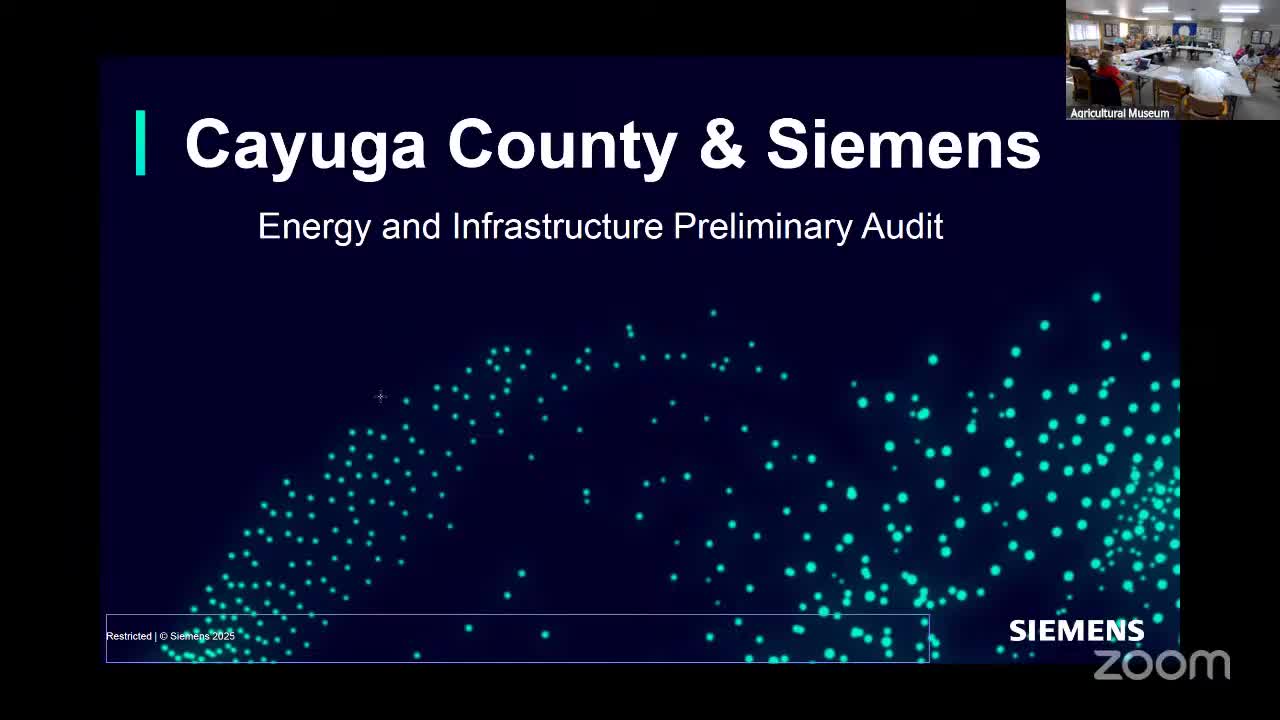Cayuga County social services warns safety-net and foster-care costs remain high amid rising shelter use
October 10, 2025 | Cayuga County, New York
This article was created by AI summarizing key points discussed. AI makes mistakes, so for full details and context, please refer to the video of the full meeting. Please report any errors so we can fix them. Report an error »

Cayuga County Department of Social Services staff told the Legislature on Wednesday that mandated programs including safety-net assistance, emergency sheltering and foster care are driving a projected increase in local costs for 2026.
The presentation outlined two main pressures: a sustained rise in emergency shelter and hotel costs for single adults and families, and higher foster-care placement costs driven by more-expensive residential and therapeutic placements. Staff said the county has budgeted $5.1 million for safety-net assistance in 2025 and proposes $5.64 million in 2026, with local share rising from about $3.1 million to roughly $3.3 million after reimbursements.
Those figures matter because reimbursement rates vary by program: “Safety net is reimbursed at only 29%,” the DSS presenter said during the briefing, describing the continuing local burden. The presenter added that emergency shelter costs had climbed from about $1.4 million in 2021 to a projected $4.35 million in 2025, driven largely by hotel and motel use when shelter capacity is exceeded.
Why it matters: County leaders said those increasing, partially state-reimbursed costs are the main driver of DSS’s local share pressure. Foster-care costs have also risen sharply: staff showed total foster-care spending climbing over the last decade and projected 2025 costs above $10 million, with several children in high-cost residential placements that can run into the hundreds of thousands per year.
DSS staff repeatedly emphasized that much of the work is mandated by state and federal programs and family court processes, limiting how much the county can change program rules. The department described investments in preventive and short-term in‑home services as a more cost-effective alternative to higher-level placements when those services can succeed.
During questions, legislators asked about drivers and potential mitigation. Staff said they were pursuing several immediate measures: a proposed reduction in authorized headcount focused exclusively on vacant positions (a net reduction of 10 positions across full- and part-time slots from the current authorized complement), continued use of federal and state grant funding where allowed, and coordination with partners providing shelter and transitional housing.
The presentation noted a significant potential offset coming from a state-funded shelter project: staff said rescue mission operators had been awarded a state HHAP (Homeless Housing and Assistance Program) award of $15 million to build a shelter, with construction expected to begin in 2026 and occupancy by 2027; county officials said that development could reduce hotel use for single adults once the shelter is operational.
Ending: DSS staff asked the Legislature to review the department’s budget lines in detail and to expect further adjustments as state program changes (including Medicaid and other eligibility shifts) are finalized. No formal vote or new policy was adopted during the meeting; the discussion was presented as budget review and planning.
The presentation outlined two main pressures: a sustained rise in emergency shelter and hotel costs for single adults and families, and higher foster-care placement costs driven by more-expensive residential and therapeutic placements. Staff said the county has budgeted $5.1 million for safety-net assistance in 2025 and proposes $5.64 million in 2026, with local share rising from about $3.1 million to roughly $3.3 million after reimbursements.
Those figures matter because reimbursement rates vary by program: “Safety net is reimbursed at only 29%,” the DSS presenter said during the briefing, describing the continuing local burden. The presenter added that emergency shelter costs had climbed from about $1.4 million in 2021 to a projected $4.35 million in 2025, driven largely by hotel and motel use when shelter capacity is exceeded.
Why it matters: County leaders said those increasing, partially state-reimbursed costs are the main driver of DSS’s local share pressure. Foster-care costs have also risen sharply: staff showed total foster-care spending climbing over the last decade and projected 2025 costs above $10 million, with several children in high-cost residential placements that can run into the hundreds of thousands per year.
DSS staff repeatedly emphasized that much of the work is mandated by state and federal programs and family court processes, limiting how much the county can change program rules. The department described investments in preventive and short-term in‑home services as a more cost-effective alternative to higher-level placements when those services can succeed.
During questions, legislators asked about drivers and potential mitigation. Staff said they were pursuing several immediate measures: a proposed reduction in authorized headcount focused exclusively on vacant positions (a net reduction of 10 positions across full- and part-time slots from the current authorized complement), continued use of federal and state grant funding where allowed, and coordination with partners providing shelter and transitional housing.
The presentation noted a significant potential offset coming from a state-funded shelter project: staff said rescue mission operators had been awarded a state HHAP (Homeless Housing and Assistance Program) award of $15 million to build a shelter, with construction expected to begin in 2026 and occupancy by 2027; county officials said that development could reduce hotel use for single adults once the shelter is operational.
Ending: DSS staff asked the Legislature to review the department’s budget lines in detail and to expect further adjustments as state program changes (including Medicaid and other eligibility shifts) are finalized. No formal vote or new policy was adopted during the meeting; the discussion was presented as budget review and planning.
View the Full Meeting & All Its Details
This article offers just a summary. Unlock complete video, transcripts, and insights as a Founder Member.
✓
Watch full, unedited meeting videos
✓
Search every word spoken in unlimited transcripts
✓
AI summaries & real-time alerts (all government levels)
✓
Permanent access to expanding government content
30-day money-back guarantee

